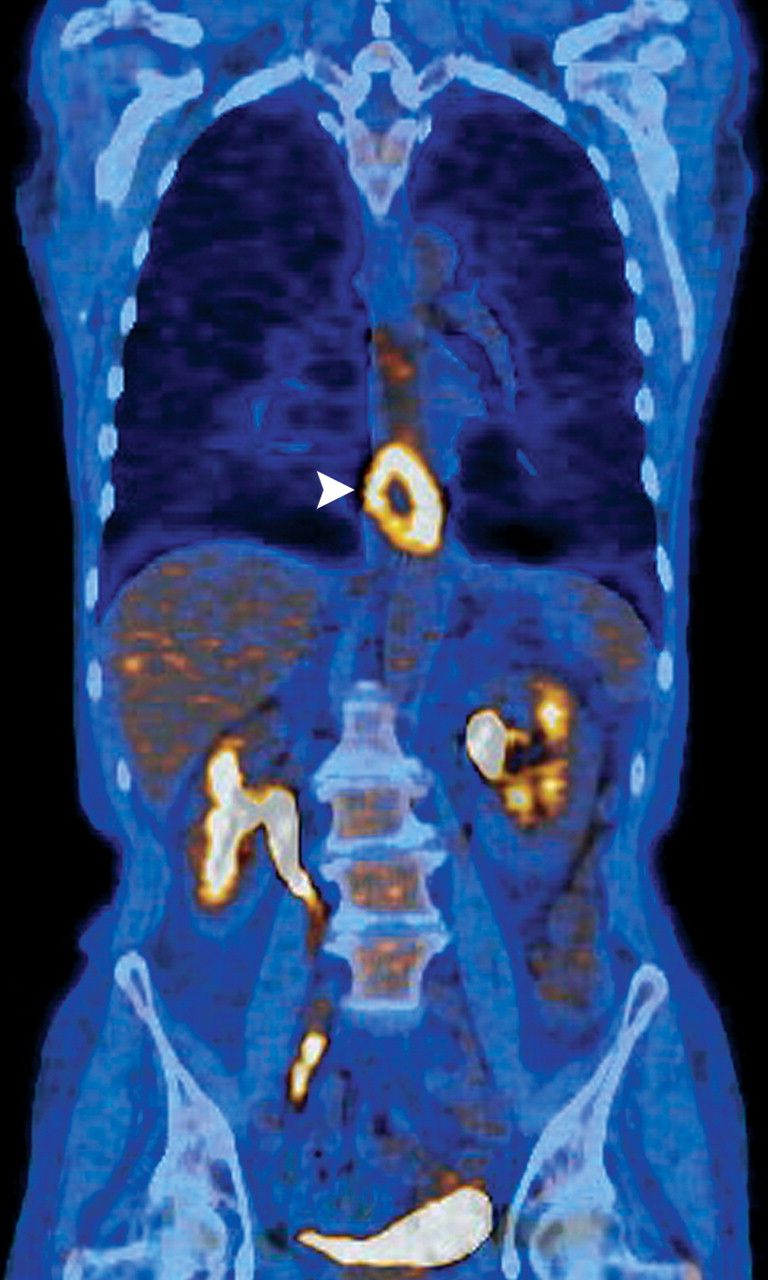Cancerous tumor cells as well as certain other diseased cells tend to be big consumers of glucose. Picture on left is ct scan in upper mediastinum with lymph nodes and vessels in a patient with lung cancer.

In111 MIBG Octreotide SPECT/CT scan indicating
The main purpose of the pet scan is to tell us whether there is active metabolism in an abnormality seen on the ct scan portion of the pet/ct.

Pet scan lung cancer accuracy. The pet scan (on the right) lights up the structures that contain cancer, thus helping prove that the cancer has already spread to these lymph nodes and changing the patient's stage from stage i to stage iii and eliminating surgery as a good treatment option. Of course, using the pet for a treasure hunt has become the norm, with the dialog indicating that if it lights up, it's cancer and the need for chemical therapy. A, pet scan shows measurement of primary lung tumor with standardized uptake value of 2.5 or greater.
The prevalence of lung cancer was 1%. The reality is that you cannot rely on a ct scan (or ultrasound, mri, or blood test) to tell you if you have cancer. It gives detailed information about your cancer.
The sensitivity, specificity, npv and ppv of visual analysis to detect malignancy were 84%, 95%, 91%, and 91%, respectively, with an accuracy of 91% (auc 0.893). However, as with most studies, there are a few exceptions. As pet scan results indicate tissue changes, they can detect disease earlier than either ct scans or mri.
After the pet scan gives them an idea what's going on they usually do a bronchoscopy and a mediastinoscopy. C, ct scan obtained with lung window shows measurement of primary lung tumor. (1)university of minnesota, minneapolis, usa.
10,11 histoplasmosis, coccidioidomycosis and blastomycosis are the most prevalent fungal lung diseases in the united states, 12,13 and are common etiologies of lung granulomas. However, as with most studies, there are a. Pet scan cancer detection accuracy.
Pet/ct, which is a combination of positron emission tomography (pet) with. Tissues with a higher metabolic rate (higher energy usage), such as lung cancer tumors, absorb more of. Pet/ct is 97% sensitive, has an 85% specificity value, a 92% negative predictive value (npv) and a 93% positive predictive value (ppv).
The pet scan suggests what might be there, but sometimes lymph nodes are swollen or inflamed because they are doing their job: Statistically speaking, pet/ct is far superior to ct in terms of diagnostic accuracy in solitary pulmonary nodule characterization. 10,11 histoplasmosis, coccidioidomycosis, and blastomycosis are the most prevalent fungal lung diseases in the united states, 12,13 and are common etiologies of lung.
The ct scan takes a. A pet scan is a very good study to detect most types of cancer throughout the body. accuracy of pet/ct nodal staging in nsclc could be improved using nodal suvmax or suvmax ratio, with optimum threshold values of 3 and 0.2 respectively improvement in test performance is insufficient to eliminate need for histological confirmation of n2/n3 nodes.
In over 80% of indeterminate ct scans, pet/ct correctly characterizes lung nodules. The parts of the body that need the most energy and the energy they use is sugar (also called glucose). Exercise should be avoided for at least 48 hours prior to a pet scan.
a pet scan is less accurate in certain situations: A lung pet scan is also used to stage lung cancer. Alice miles march 18, 2019 cancer treatment.
What they don't tell you, is that any cell that is in the process of repair, in the healing process, or in. 2.small tumors (less than 7mm) may not be detectable. The staging is not done by the pet scan.
Positive and negative predictive values were 86% and 55%. Kelly rf(1), tran t, holmstrom a, murar j, segurola rj jr. Pet scans are used to detect cancer, heart disease, and brain abnormalities.
They take some lung samples and some lymph node samples. It is only with a pet/ct scan that you will know for sure. Pet/ct scans provide significantly more information than ct scans, and are far more reliable when diagnosing cancer.
In this literature review, we first attempt to clarify how pet imaging contributes to investigating spn, in conjunction. Lung cancer is the most common malignant cancer throughout the world;

Esophageal Carcinoma With Liver Metastases /

Pin on Ashburn Connect Newsletters

VQ scan lung segment segmentation chart normal Images

Pin by Isabel on ct bung Pet ct, Diagnostic imaging

Abdominal MRI scan heartcare resonance imaging

Mean SUV values FDG PET normal reference Nuclear

Lung tumor expressing Ck7 Tumor, Lunges, Expressions

Heart Imaging CTScan MRI HeartScan Heart images, Mri

CT Scan vs. MRI Scan Ct scan, Mri scan, Pet ct

PET/CT Entenda como este exame pode ajudar no tratamento









